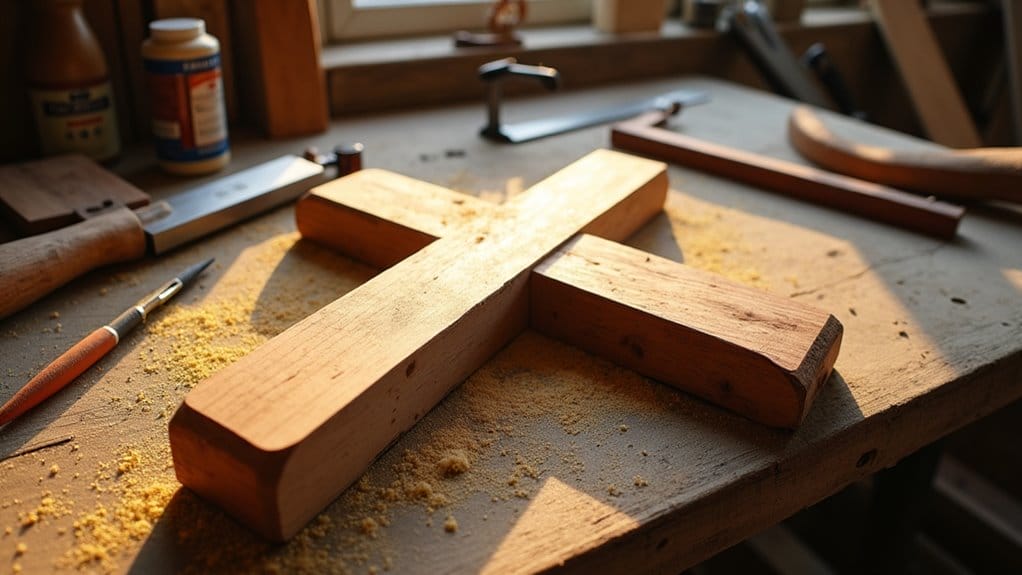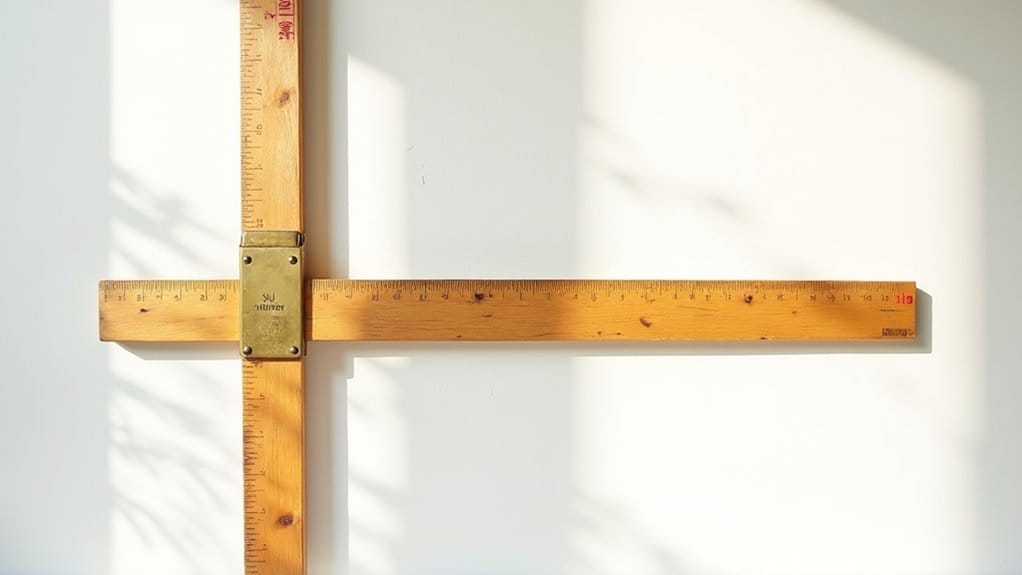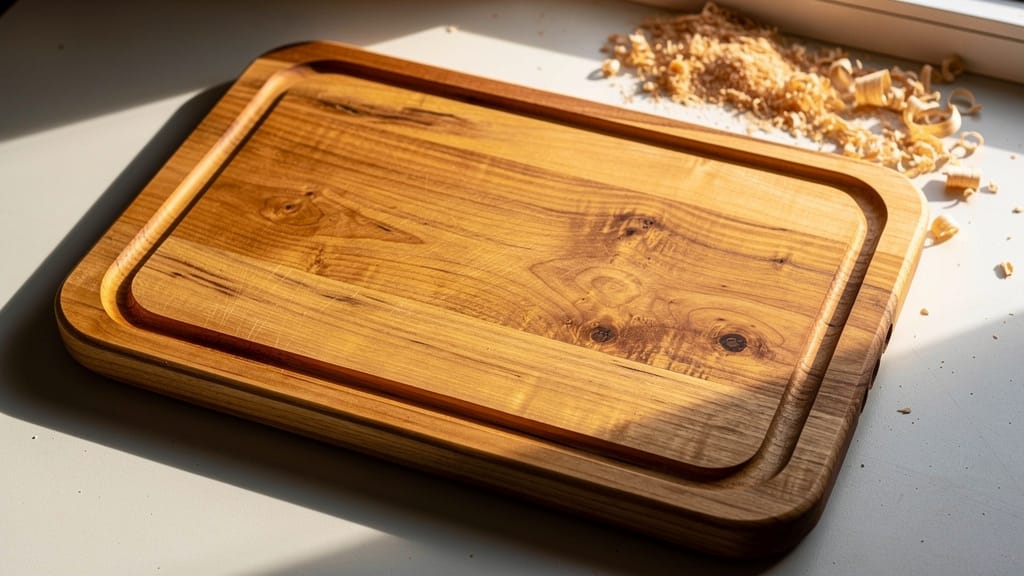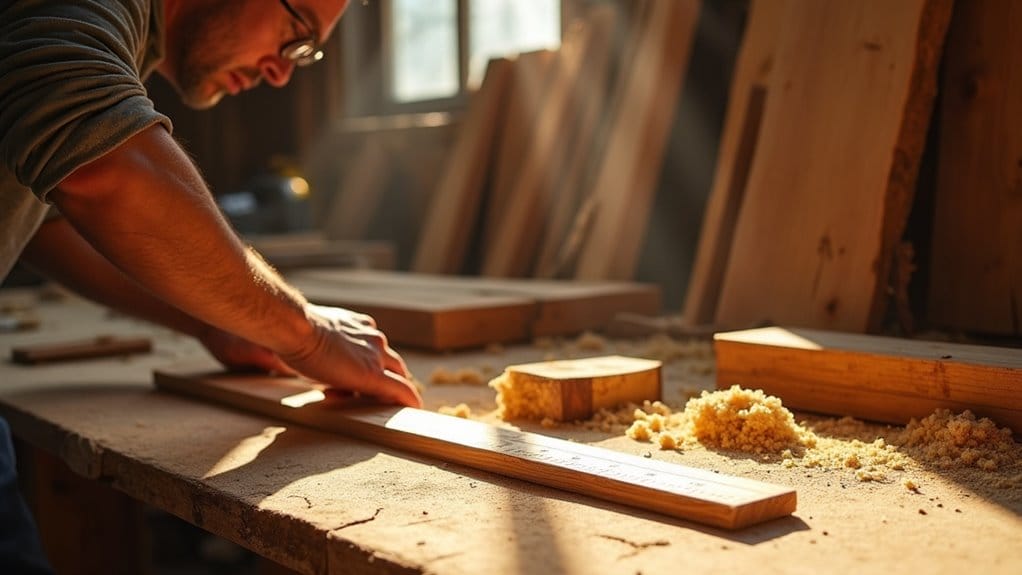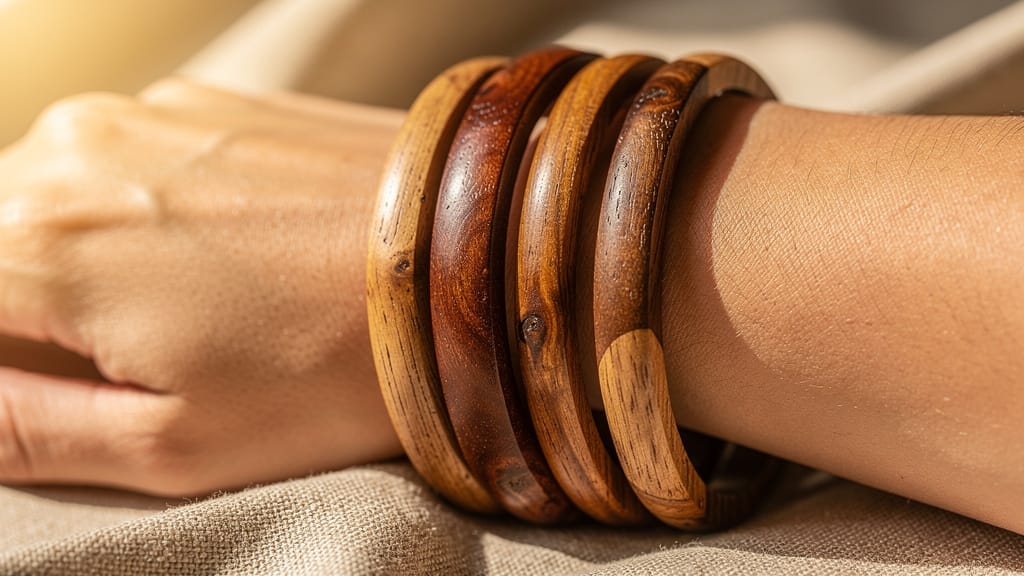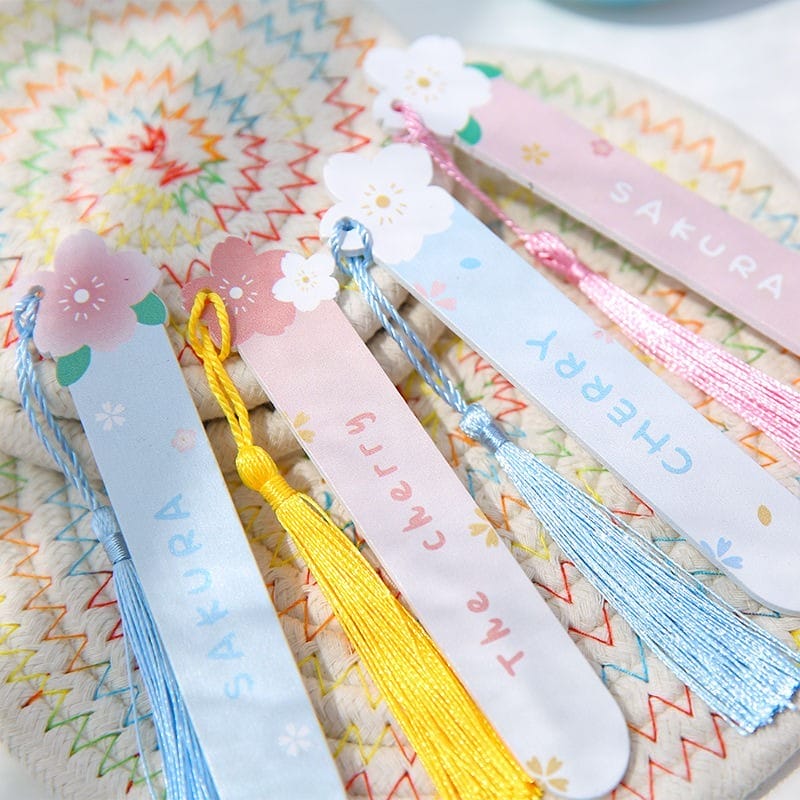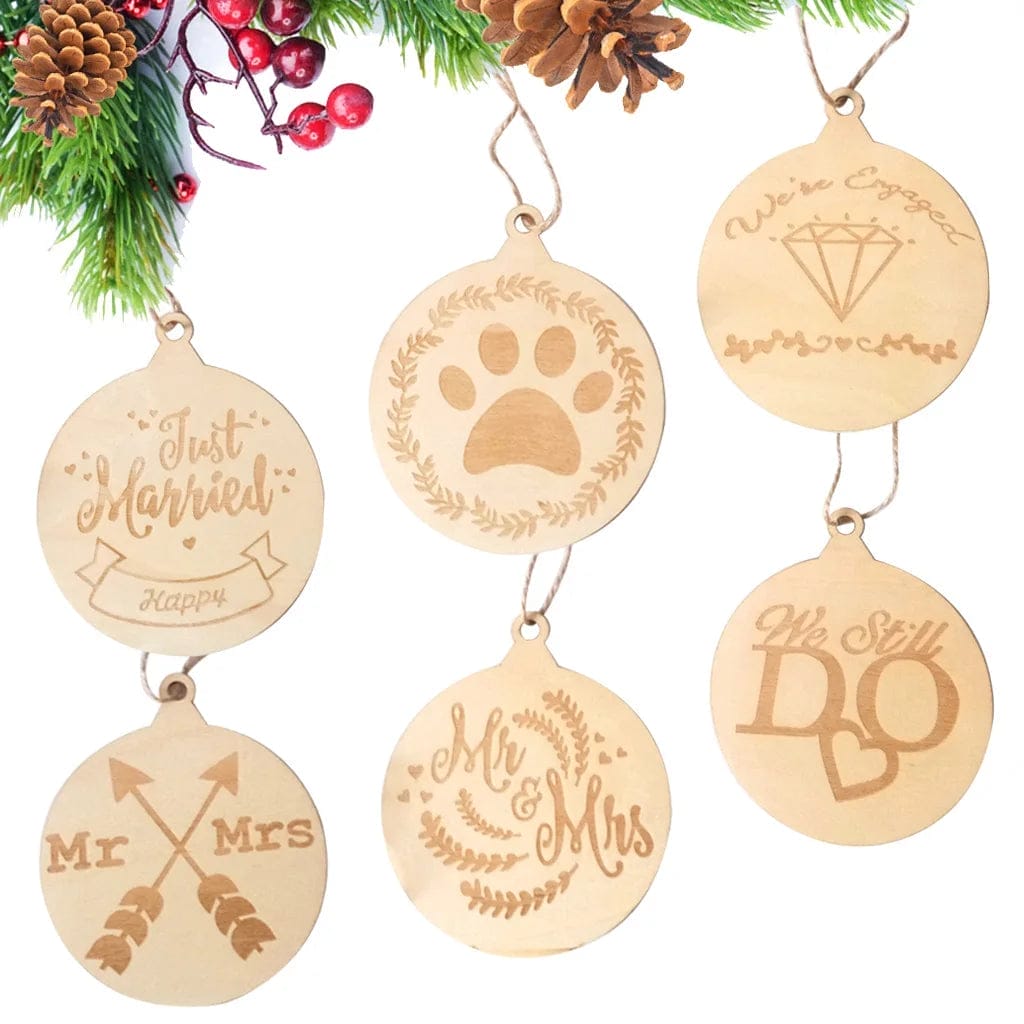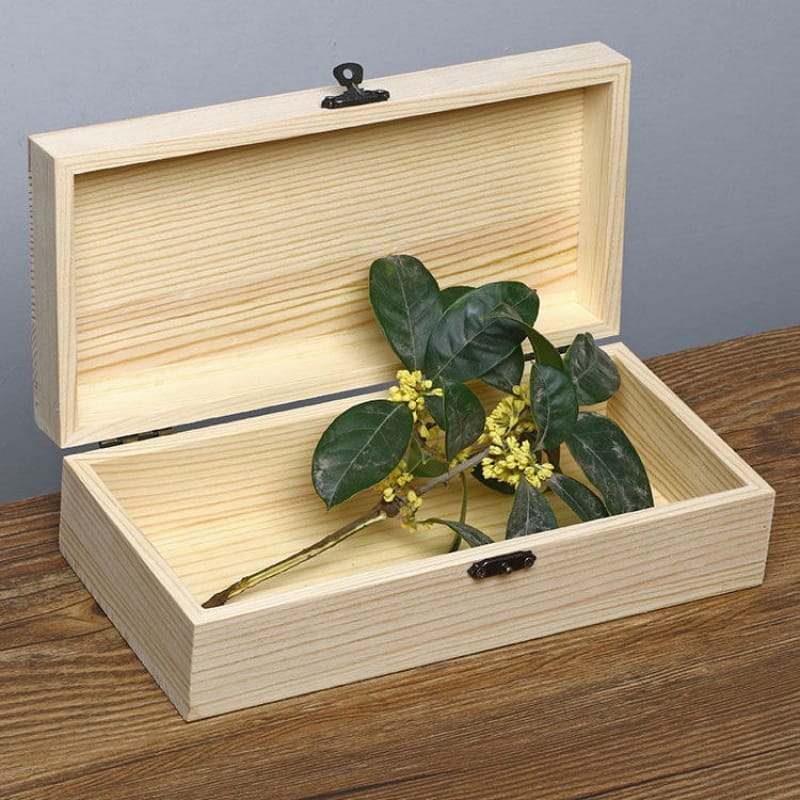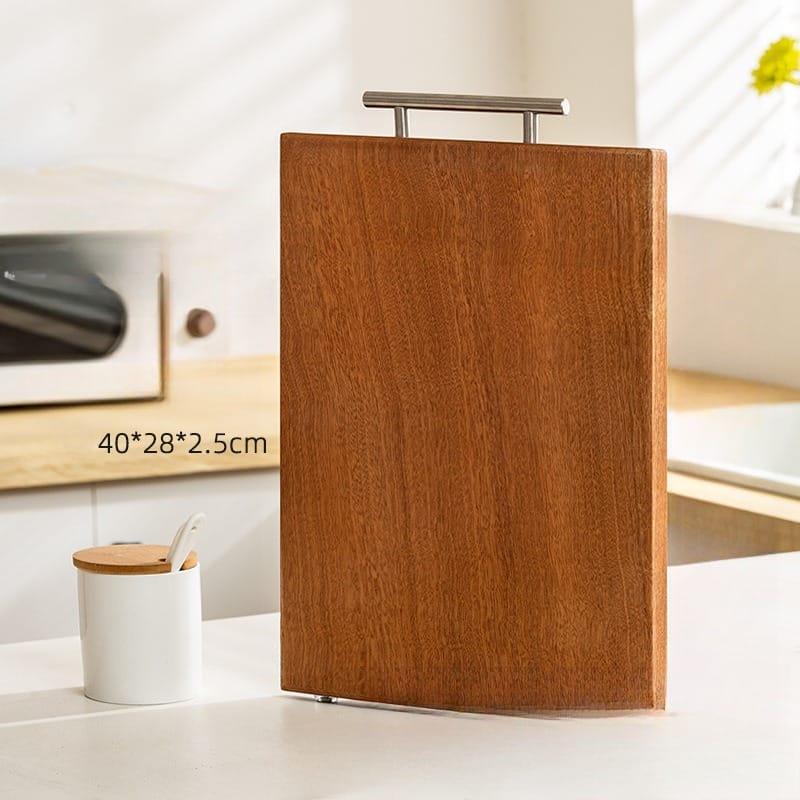Choosing the right cutting board is crucial for any home cook or professional chef. A cutting board is more than just a surface to chop on. It’s an essential tool that impacts knife sharpness, hygiene, and overall food preparation.
What wood is best for a cutting board? This guide examines the best wood for cutting boards and guides on selecting the ideal one for your specific needs.
Key Takeaways
- Choosing the right wood is essential for cutting boards to balance durability, knife-friendliness, and hygiene.
- Maple, walnut, bamboo, cherry, and beech are among the best wood choices. Each offers unique benefits in hardness, appearance, and sustainability.
- End-grain boards are gentler on knives and more durable than edge-grain boards. But they can be more expensive.
- Proper care and maintenance are crucial to prolong the board’s lifespan and maintain hygiene.
- We offer customized cutting boards in various sizes, wood types, and designs. This enables you to cater to the diverse needs of your customers.
Understanding Cutting Board Materials

Importance of Choosing the Best Wood
When selecting a cutting board, the wood type matters significantly. The best wood for a cutting board is one that balances hardness with the ability to self-heal from knife marks.
Hardwoods like maple are often favored, as they provide a durable cutting surface without excessively dulling knives.
Choosing the best wood for cutting is essential for maintaining both your tools and your food safety. Selecting the best cutting board means considering factors beyond just cost.
Plastic vs. Wooden Cutting Boards
The debate between plastic boards and wooden cutting boards continues. Plastic cutting boards are often touted for their ease of cleaning, especially in dishwashers. However, plastic cutting boards can harbor bacteria in knife grooves and may dull knives more quickly.
Wooden cutting boards, especially those made from the best wood for a cutting board, naturally inhibit bacteria and can be gentler on knife edges. While both have their pros and cons, the choice often depends on personal preference and intended use.
What Wood Is Best for a Cutting Board? 5 Top Options

Maple: The Traditional Choice
When considering what wood is best for a cutting board, maple wood often comes to mind as a traditional and reliable option. Maple cutting boards are prized because they’re hard enough to resist scratching from your knife but gentle enough not to damage the blade.
This type of wood cutting board, especially those made from maple, offers a good balance of durability and hygiene. The closed grain structure of wood like maple, helps to prevent bacteria from penetrating the cutting surface. This makes it a safe choice for any home cook or professional.
Walnut: Aesthetic and Durable
Walnut cutting boards offer a touch of elegance while providing excellent functionality. The rich, dark color of walnut wood makes it a visually appealing addition to any kitchen.
While slightly softer than maple, a cutting board made of walnut still offers a durable cutting surface and is gentle on knives. Many people appreciate walnut cutting boards for their aesthetic. But they are also functional and hygienic. In addition to their beauty, walnut cutting board advantages include their natural resistance to bacteria and the ability to self-heal minor cuts and scratches over time. This makes them not only a stylish choice for your kitchen but also a practical one for food safety. Furthermore, their rich color and unique grain patterns can enhance the overall aesthetic of your culinary space.
Choosing the best wood for cutting boards involves considering both appearance and performance.
Bamboo: Sustainable and Cost-Effective
Bamboo cutting boards are an increasingly popular option for those seeking a sustainable and cost-effective alternative.
Technically a grass, bamboo boasts impressive hardness and density. This makes it a durable choice for a chopping board. Bamboo is well-known for its rapid growth and renewability. It is an environmentally responsible cutting board material.
While some argue about its long-term durability compared to hardwoods like maple, bamboo presents a compelling option for the eco-conscious home cook looking for the best wood for cutting boards.
Cherry: Smooth Grain and Rich Color
Cherry wood offers a smooth grain and rich color. It is a beautiful option for a wooden cutting board. It falls between maple and walnut in terms of hardness, providing a good balance of durability and knife friendliness.
Cherry wood darkens and becomes more lustrous with age. This adds to its appeal as a long-lasting kitchen tool. If you’re looking for the best balance between aesthetics and practicality, consider a cutting board like Cherry.
Beech: Hard and Resistant to Scarring
Beech is another hardwood option that offers a hard and resistant cutting surface. Often used in butcher blocks, beech is famous for its ability to withstand heavy use and resist scarring from knives. It’s a durable choice for those who require a robust cutting board for demanding tasks.
This dense wood grain prevents liquids and bacteria from penetrating the board, making it a hygienic choice. Consider beech if you need a cutting board that can withstand daily wear and tear.
What About the Hardness and Durability of Wood?

Measuring Hardness: Janka Scale
The Janka scale is a crucial tool for determining the hardness of different types of wood. It plays a pivotal role in choosing the right material for a durable wooden cutting board. This scale measures the force required to embed a steel ball into the wood, providing a quantitative measure of its resistance to dents and scratches.
For wood cutting boards, a moderate Janka rating indicates a good balance between durability and knife friendliness. The best wood will withstand repeated use without dulling your knife.
Durability Factors in Cutting Boards
Durability in a wood cutting board depends on several factors, including the wood type, its grain orientation, and how well it’s maintained. The best wood for a cutting board resists moisture absorption, which can lead to warping and cracking, making it a challenge to select the ideal material.
Hardwoods, like maple or walnut, are generally more durable than softwoods. Considering the cutting surface’s ability to withstand repeated chopping and cleaning is essential. The piece of wood you select will significantly impact the longevity of your wooden board.
Edge Grain vs. End Grain Boards
Edge-grain and end-grain cutting boards differ significantly in their construction and performance. Edge-grain boards feature the wood grain running horizontally, presenting a wider, flatter surface.
End-grain boards expose the ends of the wood fibers. They create a self-healing surface that’s gentler on knives, offer superior durability, and help maintain knife sharpness.
The best wood for end-grain cutting boards is often maple. This makes end grain cutting boards a premium choice, but also a more expensive option.
Caring for Your Wooden Cutting Board

Cleaning and Maintenance Tips
Proper cleaning and maintenance are essential for prolonging the life of your cutting board. Always wash your cutting board by hand with warm, soapy water after each use. Avoid soaking the wood cutting board in water, as this can cause warping and cracking.
Sanitize the surface occasionally with a diluted vinegar solution. For wood cutting boards, regular oiling with food-safe mineral oil helps to prevent the wood from drying out.
Proper maintenance helps to ensure the wood remains hygienic and functional.
Seasoning Your Cutting Board
Seasoning your wooden cutting board is a crucial step in maintaining its quality and longevity.
Seasoning involves applying a food-grade mineral oil to the surface of the wood, allowing it to penetrate the fibers and prevent drying. The best wood is often very receptive to mineral oil. Regularly seasoning your wooden cutting boards will keep them moisturized, preventing cracks and warping.
For best results, apply the oil generously, let it sit overnight, and wipe off any excess. This helps to keep your cutting board in the best condition for longer.
Signs of Wear and When to Replace
Even the best wood cutting boards eventually show signs of wear and tear. Deep knife grooves, cracks, and warping are indicators that it may be time to replace your wooden cutting board.
Excessive staining or persistent odors, even after cleaning, can also signal that the cutting surface is no longer hygienic. Regularly inspect your wood cutting board for these issues, and consider replacing it when necessary to ensure food safety.
While proper care can extend its lifespan, even the best cutting surface won’t last forever.
Choosing the Best Wood for Your Needs

Factors to Consider When Sourcing
When sourcing the best wood for a cutting board from our factory, several factors should guide your decision.
- Consider the intended use. A professional chef requires a different type of wood compared to a home cook.
- Durability is paramount. Therefore, hardwoods like maple or walnut are great choices. The best cutting board needs to withstand daily use.
- The type of wood also affects hygiene. Dense woods are less prone to harbor bacteria.
- Ensure the wood cutting board is sustainably sourced and meets food safety standards.
Partnering with us ensures you gain access to high-quality wood and sustainable practices when sourcing your wood boards.
Best Budget Options for Cutting Boards
Finding the best wood for cutting boards on a budget involves exploring cost-effective yet durable options. Always balance cost with the necessity for hygiene, durability, and knife friendliness. Here are some budget-friendly options:
| Wood Type | Characteristics |
|---|---|
| Bamboo | Sustainable and relatively inexpensive; an affordable cutting surface. |
| Acacia Wood | Durable and readily available. |
| Maple | Affordable and durable. |
Partnering with our factory ensures you receive competitive pricing on a variety of quality woods used for cutting boards.
Customizing Your Cutting Board Choice
Customizing your cutting board choice allows you to tailor the product to specific needs and preferences.
Consider the size and shape. A larger board is suitable for extensive chopping, while a smaller one is ideal for smaller tasks.
Selecting the best wood, like maple, enhances durability and performance. End-grain cutting is gentler on knives, making the type of wood a crucial factor.
Personalize your board with custom engravings or unique designs. Our factory offers a wide range of customization options. So you can create a cutting board that meets the specific needs of your customer and is truly the best cutting board possible.
Final Words
Choosing the best wood for cutting boards involves carefully balancing durability, hygiene, aesthetics, and cost. Wood like maple stands out as a reliable choice for its hardness and hygiene. Walnut boards offer a touch of elegance. Bamboo provides a sustainable alternative, and beech ensures robustness for demanding tasks. Additionally, acacia wood cutting board benefits include its natural resistance to moisture and bacteria, making it a practical option for kitchen use. The striking grain patterns of acacia also add a unique visual appeal, enhancing the overall aesthetic of your kitchen space. Moreover, its durability ensures that it can withstand heavy-duty use without easily scratching or denting.
By understanding these factors and considering the specific needs of the end user, you can confidently select the perfect cutting board.
Remember, proper care and maintenance will extend the life of any wooden cutting board. Ultimately, finding the best cutting board is about making an informed decision that aligns with your priorities.










